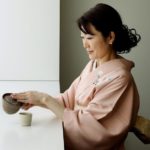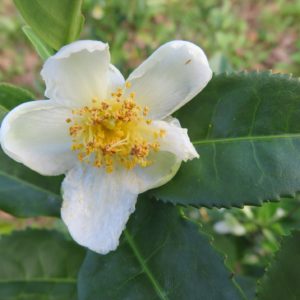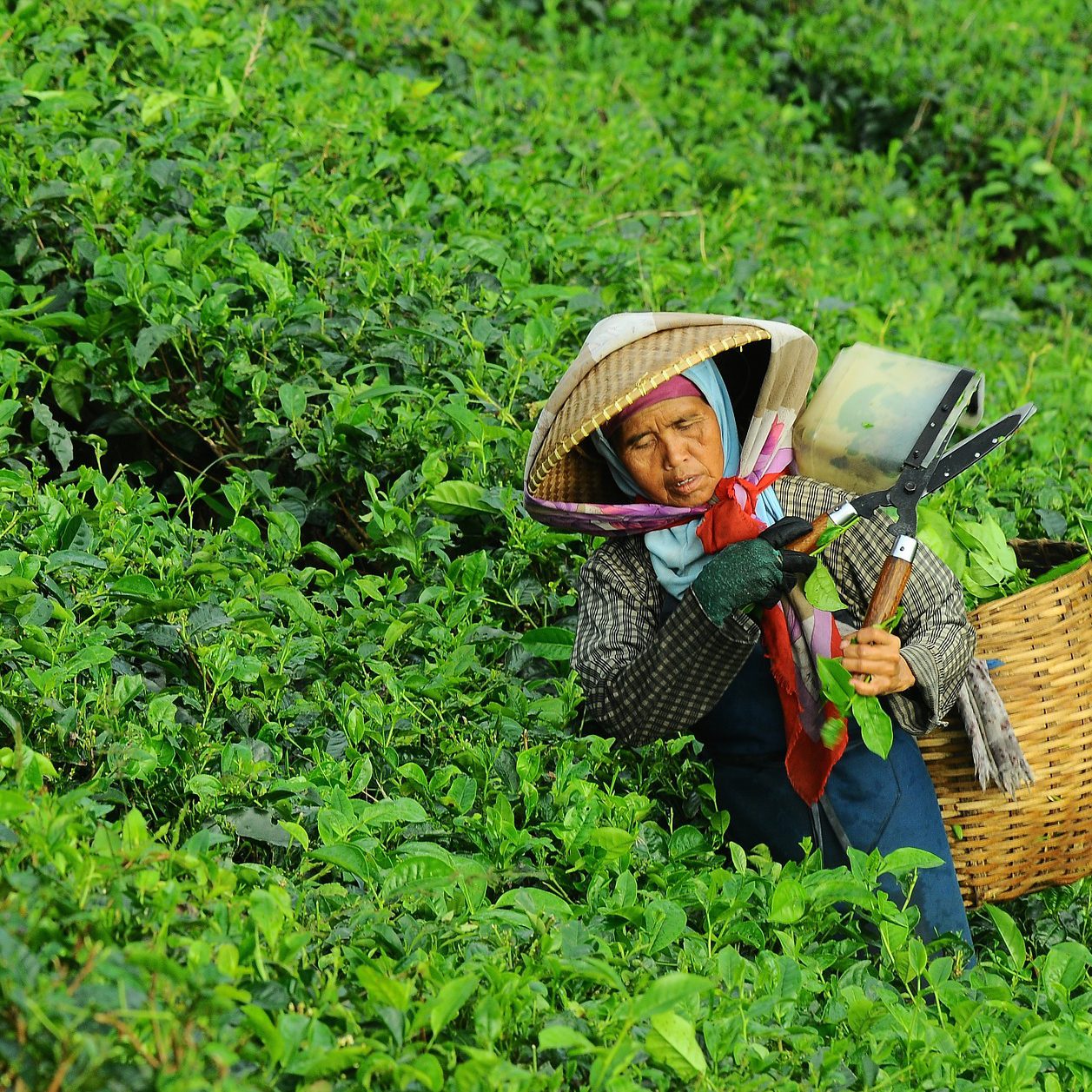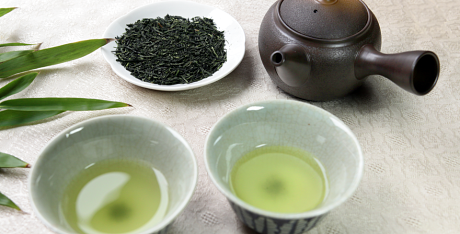All About Japanese Green Tea with Emiko Okamoto
Le Colibry first met Emiko Okamoto at a discovery workshop on the health benefits of green tea and the Japanese art of tea drinking. In this interview, Emiko shares the secrets and virtues of this amazing beverage.
 Originally from Osaka, Emiko Okamoto is a certified Japanese Tea Advisor and member of the Nihoncha Instructor Association. Since 2016, she’s partnered with the Japan Tea Association and the Japanese Minister of Agriculture, Forestry and Fishing (MAFF) to increase the visibility of Japanese tea abroad, including its many health benefits and unique history.
Originally from Osaka, Emiko Okamoto is a certified Japanese Tea Advisor and member of the Nihoncha Instructor Association. Since 2016, she’s partnered with the Japan Tea Association and the Japanese Minister of Agriculture, Forestry and Fishing (MAFF) to increase the visibility of Japanese tea abroad, including its many health benefits and unique history.
Emiko studied German language and literature in Kyoto before moving to Zurich and then Geneva to work in watchmaking. Later, she decided to dedicate herself to her passion for Japanese tea.
Where Does Green Tea Come From?
 The green, black and oolong teas that we drink today all come from a single tea plant called Camelia Sinesis, which presumably originated in the mountains of Yunnan in Southwest China.
The green, black and oolong teas that we drink today all come from a single tea plant called Camelia Sinesis, which presumably originated in the mountains of Yunnan in Southwest China.
A short history of Japanese tea:
In the 12th century, Japanese Buddhist monk Eisai 栄西 brought powdered green tea and tea seeds back from China to his monastery. The monks began to drink the powdered tea for its stimulating effect, and the first of the seeds were planted in Toganô, Kozenji 栂ノ尾 高山寺 in Kyoto. Tea was first cultivated in great quantity in the region of Uji, Kyoto district, before spreading to the rest of Japan.
The tea ceremony (Cha no Yu) was conceived during the late 14th and the 15th century, and in the 16th century it was perfected by Sen no Rikyu 千利休, the most famous tea master.
In the 18th century, Soen Nagatani 永谷宗円 invented the process for manufacturing Sencha.
In the 19th century, Japan began exporting its tea.
Good to know: Japan currently produces 95,000 to 100,000 tons of tea per year, of which only 5% are exported.
What Is the Difference Between Green and Black Tea?
 To make green tea (as opposed to black tea), the natural oxidation process is halted shortly after the tea is harvested.
To make green tea (as opposed to black tea), the natural oxidation process is halted shortly after the tea is harvested.
To stop the the freshly harvested leaves from oxidizing, they are heated to a high temperature in a kettle of water. Next they are dried, kneaded, rolled, and finally winnowed. This steaming method supposedly preserves the original properties of the leaves (as opposed to the Chinese method, where the leaves are heated in bowls). I’ll leave it to the purists to decide…
What Are the Health Benefits of Green Tea?
Because oxidation is stopped immediately after the leaves are harvested, green tea contains a large amount of catechins. Depending on the type of green tea, these catechins are present at 11 to 17%. They give the tea powerful natural medicinal effects and a distinctly bitter taste. The more sunlight a tea plant absorbs, the thicker its leaves will be and the higher its catechin content. Teas from the southern provinces are more bitter than others.
Main health benefits:
- Powerful antioxidant (neutralizes free radicals)
- Anti-allergenic, antiseptic, fights viruses
- Toning effects from Vitamin C (5 cups of Sencha = 3.5 oz of lemon juice, or around 7 tablespoons)
- Helps lower cholesterol levels in the blood
- Lowers blood pressure
It also has a high amount of minerals, magnesium, calcium and potassium as well as fluorine, which helps fight cavities.
Green teas with fewer catechins have a relaxing effect. Teas made from the stems of the tea plant, for example, contain more theanines (amino acids).
What Are the Different Kinds of Green Tea?
75% of all tea drunk in Japan is Sencha, unique to the country.
There are also many other varieties:
- Matcha: powdered green tea
- Gyokuro: rich in theanine and low in tannins, it’s one of the sweetest kinds of green tea and a good substitute for coffee
- Genmaicha: a mix of green tea and roasted brown rice, it can also be combined with Matcha
- Hojicha: a roasted green tea low in caffeine and catechins.
Japanese green tea is known for its grassy, bitter flavors. Other signature taste elements include spinach, salt, and seaweed—Japan is an island, after all!
What Is the Best Way to Prepare Sencha Green Tea?
 Boil the water. The best temperature for pouring water over tea is between 70 and 85°. We recommend first pouring the boiled water into the teacups, to heat them up.
Boil the water. The best temperature for pouring water over tea is between 70 and 85°. We recommend first pouring the boiled water into the teacups, to heat them up.
Scoop the tea into the teapot (1 teaspoon of tea per teacup) and then pour the boiling water out of the teacups into the teapot.
Steeping time: 1 minute. Next, pour the steeped tea into the teacups one by one, filling them only halfway. Then, starting with the last cup you poured and working backward to the first, fill the teacups up the rest of the way. This ensures that the tea in each cup has been steeped for exactly the same amount of time.
Good to know: you can reuse tea leaves up to two times by steeping them again in hot water (make sure not to leave the teapot too damp in between usages). For the second and third batches, 10 seconds of steeping time is enough.
Where Can I Find It?
On her website: www.millepins.ch
The green teas on the site come from independent family-run tea farms, certified origin Kyoto and Kyushu.
Try the all-new organic variety: Superior Sencha 多々羅 ‘Tatara’ from Fukuoka, made with bold-flavored baby tea plants harvested in early spring. 100% organic.
Aux Mille Pins: Emiko’s mobile tea house. The name continues the legacy begun by Emiko’s grandmother. She ran a small bistro in Japan named “Matsuman” (Ten Thousand Pine Trees, or Aux Milles Pins in French). The pine tree, or matsu, is the symbol of longevity in Japan.
Aux Mille Pins also offers workshops on how to prepare tea with a Japanese teapot, or kyusu, in a friendly, relaxed setting.
Contact: or
Emiko has been a participant in Switzerland’s Week of Taste (La Semaine du Goût). In Geneva, she works with the Baur Foundation and the Far East Museum, among others.

Le Colibry would like to dedicate this article to Féminin Pluriel, the inspiration behind this encounter.
Féminin Pluriel is an international professional network that brings together “woman of heart, intelligence and action with shared values.” Find out more: https://femininpluriel.org







